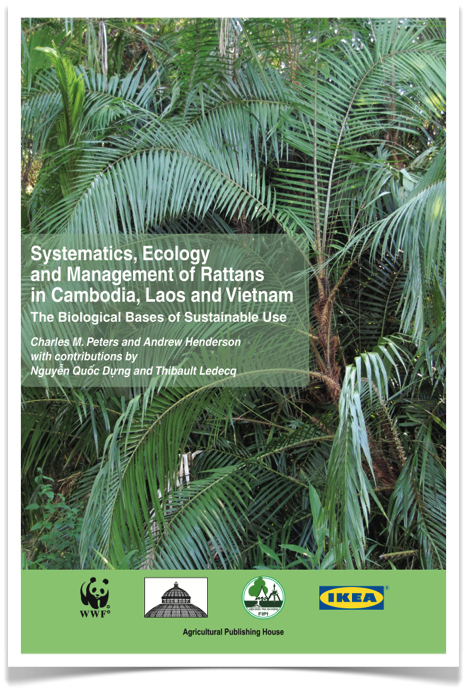
Figure above shows size-specific growth rates for six rattan species from Laos and Cambodia. The data were collected over a four year period to provide a production baseline for defining a sustainable harvest of cane. In the absence of these data, the communities were operating under the assumption that 20% of the canes in the forest could be harvested each year on a sustainable basis. This assumption, which was provided as an interim indicator by the WWF rattan program, is valid if the commercial canes are growing at least 1.0 meter/year. i.e. it takes five years to produce a merchantable rattan cane such that 20% of the resource stock can be harvested each year.
The growth data shown above verify that a 20% harvest intensity is appropriate for all of the rattan species except Calamus tetradactylus. The merchantable canes (≥5.0 m long) of this species exhibit an average growth rate of 0.78 meter/year [NOTE: Average growth rates of merchantable canes are shown as a dotted horizontal line in each histogram] and annual harvest intensities, as a result, should be considerably less than 20%. Similarly, more than 20% of the merchantable canes could be harvested sustainably from other species, e.g. Myrialepis and Plectocomia, which are both growing well over 2.0 meters/year.
When you know the actual yield characteristics of the resource you are exploiting, you can be very precise in defining a sustainable offtake. [NOTE: These data are currently being written up in an article, so please do not copy, distribute, or cite. Thx].
 Friday, February 28, 2014 at 10:34AM
Friday, February 28, 2014 at 10:34AM 
 Laos,
Laos,  rattan inventory,
rattan inventory,  training workshop in
training workshop in  Other,
Other,  Science | |
Science | |  Email Article |
Email Article |  Print Article
Print Article 











